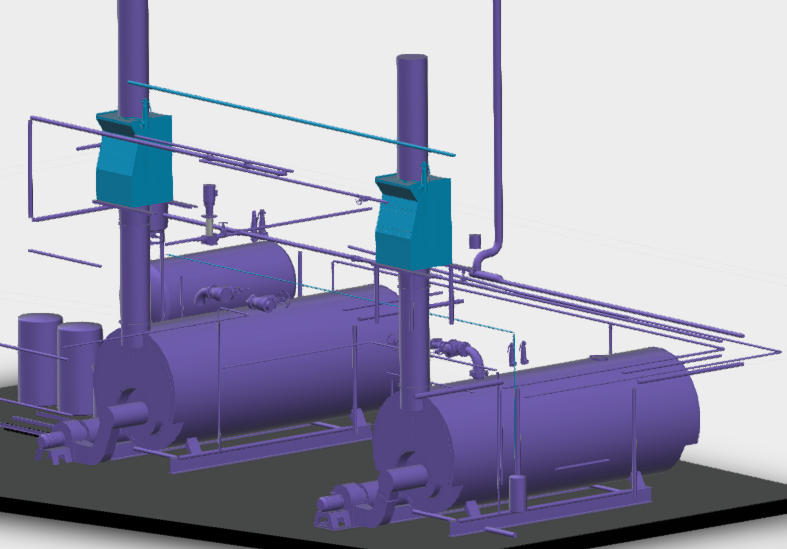

Latent heat is a significant source of energy. This means condensing boilers can potentially hold an efficiency rating of up to 98% in some cases. By comparison, a traditional boiler is generally between 70-85%. That means, on the low end, a condensing boiler is able to deliver an extra 10-15% efficiency rate.
Condensing Boiler Maintenance For Optimal Efficiency
To keep your condensing boiler operating at peak performance, establishing a maintenance plan, and having a qualified technician conduct the maintenance is essential.
Below is a detailed maintenance plan to help ensure you’re addressing every element of your condensing boiler so that it can perform efficiently. As always, follow your manufacturer’s recommendations for routine maintenance and maintain a daily logbook.
For service techs performing maintenance, follow this annual start-up checklist:
- Address reported problems.
- Inspect the interior of the boiler.
- Clean and vacuum if necessary.
- Clean the condensate trap and fill it with fresh water.
- Check for any water, gas, flue, or condensate leaks.
- Verify flue and airlines are in good condition and sealed tight.
- Check the system’s water pressure, system piping, and expansion tank.
- Examine the fill water meter.
- Test the boiler water.
- Inspect the control settings.
- Look over the ignition and flame sense electrodes.
- Clean off any deposits and reposition.
- Survey the wiring and connections.
- Perform a start-up, checkout, and performance verification to ensure everything is in place.
- Conduct a flame inspection.
- Look over the flame signal. Note: The flame should be at least 10 micro amps at high fire.
- Clean the heat exchanger if the flue temperature is more than 54°F (30 °C) above the water return temperature.
- **Annually* pull gas arm and clean heat exchanger.
- **Annually** replace condensate neutralizer kit.
If executing a combustion or performance test:
- Clean the heat exchanger.
- Remove and clean the burner using only compressed air.
- Clean the blower wheel.
Important note: condensing boilers require return water temperatures below the dew point of the boiler exhaust. This is critically important for overall system efficiency.
This checklist will help you ensure your condensing boiler efficiency is where it should be.
Condensing Boiler Maintenance Logs
Maintaining accurate boiler logs is important for any boiler system. Consider having the following items on your condensing boiler logs:
- Boiler pump Voltage (In operation)
- Boiler pump amperage (In operation)
- Circulation pump voltage (In operation)
- Circulation pump amperage (In operation)
- Combustion analyzer _______ppm CO_______%O2
- Inlet gas pressure: __________” WC while off _________” WC full fire
- Wire condition, note any damaged or frayed wires
- Any visible rust or discoloration? If yes, where?
- Any visible corrosion? If yes, where?
- Boiler inlet water temperature
- Boiler outlet water temperature
- Runtime hours
- LWCO operation test, put in test mode
- Check flow switch, pull 1 wire from switch while running
- PSI of system


Not Ready For A Condensing Boiler?
If the idea of investing in a new boiler system is impractical, there are ways you can reach similar efficiency with a traditional boiler. This involves the installation of a condensing economizer or flue gas heat recovery unit.
These economizers work by reclaiming energy that would normally be lost in stack exhaust. In the same way a condensing boiler preheats feedwater, an economizer takes this captured energy and does the same thing.
“By recovering waste heat, an economizer can often reduce fuel requirements by 5% to 10% and pay for itself in less than 2 years.” – US Department of Energy
Learn more about how a Heatmizer economizer transfers waste heat from boiler exhaust gases and uses that energy to preheat the boiler feedwater. The overall effect is a decrease in fuel energy consumption for a given steam demand, so you see maximum annual savings.
Have Questions About Condensing Boiler Efficiency?
Regular maintenance is crucial for keeping your condensing boiler running efficiently and lasting longer. Along with following the annual start-up checklist mentioned earlier, it’s important to schedule professional maintenance at least once a year. A qualified technician will conduct thorough inspections. This includes cleaning the heat exchanger, identifying and resolveing performance issues, and makeing adjustments to ensure your condensing boiler operates at its best efficiency. By sticking to a maintenance plan and having accurate maintenance logs, you can optimize your condensing boiler’s energy-saving capabilities and boost its efficiency.
Call the pro’s at Rasmussen Mechanical Services at 1-800-237-3141, reach out for a free estimate or email sales@rasmech.com. Our team is here to help!



